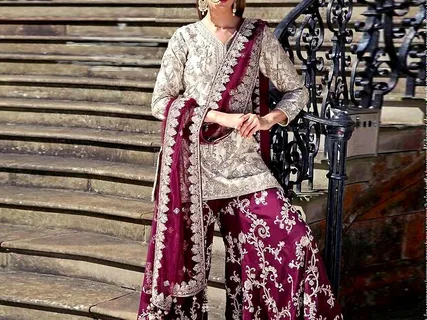The Pakistani fashion industry has witnessed a dynamic evolution over the years, with Western dresses gaining increasing popularity alongside traditional attire. This blend of cultural heritage and modern influences has created a unique fashion landscape in Pakistan. In this article, we will explore the evolution of Western dresses in the Pakistani fashion industry, highlighting key trends, designers, and societal influences that have shaped this transformation.
1. Early Influences and Introduction
The introduction of Western Dresses in Pakistan dates back to the British colonial era. Western clothing styles began to influence local fashion as British officials and their families introduced their sartorial preferences. However, it was only after Pakistan gained independence in 1947 that Western dresses started to make a significant impact.
Post-Independence Fashion Trends
In the early years post-independence, Western fashion was largely confined to the elite and upper-middle class. Women began to adopt Western dresses for formal occasions and social gatherings, while traditional attire remained predominant for everyday wear. The 1960s and 1970s saw a gradual acceptance of Western styles, with influences from global fashion trends and Bollywood cinema.
2. The 1980s and 1990s: A Period of Transition
The 1980s and 1990s marked a transitional phase for Western dresses in Pakistan. This period saw a significant shift towards modernization and globalization, which influenced the fashion industry profoundly.
Television and Media Influence
The rise of television and media played a crucial role in popularizing Western dresses. Fashion shows, dramas, and advertisements showcased Western clothing, making it more accessible and appealing to the masses. Designers began experimenting with Western styles, incorporating them into their collections.
Emergence of Pakistani Designers
The 1990s witnessed the emergence of several prominent Pakistani fashion designers who played a pivotal role in blending Western and traditional styles. Designers like Rizwan Beyg, Maheen Khan, and Deepak Perwani introduced innovative designs that incorporated Western elements while respecting cultural sensibilities.
3. The 2000s: Embracing Western Fashion
The new millennium brought a more open acceptance of Western dresses in Pakistani fashion. With globalization and increased exposure to international trends, Western fashion became more mainstream.
Designer Collaborations and Fashion Weeks
The establishment of fashion weeks and designer collaborations significantly contributed to the acceptance of Western dresses. Events like Pakistan Fashion Week and Bridal Couture Week provided a platform for designers to showcase their Western-inspired collections, attracting a wider audience.
High-Street Fashion and Retail Expansion
The expansion of high-street fashion brands and international retail chains in Pakistan also played a significant role. Brands like Khaadi, Generation, and Sapphire began offering Western clothing lines, making trendy and affordable Western dresses accessible to a broader demographic.
4. Modern-Day Trends and Influences
Today, Western dresses are an integral part of the Pakistani fashion industry, with a wide range of styles and designs available to suit various preferences and occasions.
Fusion Fashion
A notable trend in modern Pakistani fashion is fusion wear, which combines Western and traditional elements. Designers creatively blend fabrics, cuts, and embellishments to create unique outfits that cater to contemporary tastes while preserving cultural aesthetics. Fusion fashion is particularly popular among the younger generation, who seek versatile and stylish clothing options.
Influence of Social Media and Celebrities
Social media platforms and celebrity culture have significantly influenced the fashion landscape. Fashion influencers and celebrities often showcase Western dresses on platforms like Instagram, setting trends and inspiring their followers. This instant exposure and accessibility to global fashion trends have accelerated the adoption of Western styles.
Acceptance in Formal and Casual Wear
Western dresses are now widely accepted for both formal and casual wear. From chic office attire and elegant evening gowns to casual dresses and everyday wear, Western fashion has permeated various aspects of Pakistani life. Designers continue to innovate, offering a diverse range of options to cater to different tastes and occasions.
5. Challenges and Cultural Sensitivities
Despite the widespread acceptance of Western dresses, the Pakistani fashion industry faces challenges related to cultural sensitivities and societal norms.
Balancing Modernity and Tradition
One of the primary challenges is balancing modernity with tradition. Designers must navigate the delicate balance between creating contemporary designs and respecting cultural and religious values. This involves thoughtful consideration of modesty, fabric choices, and design elements to ensure that Western-inspired outfits align with societal expectations.
Societal Perceptions
Societal perceptions and acceptance of Western dresses can vary based on factors such as region, age, and social class. While urban areas and younger generations are more open to Western fashion, rural areas and older generations may hold more conservative views. Addressing these diverse perspectives is essential for the continued growth and acceptance of Western dresses in Pakistan.
Conclusion
The evolution of Western Dresses in Pakistan fashion industry reflects a journey of cultural integration, modernization, and creativity. From its early influences during the colonial era to its current status as a mainstream fashion choice, Western fashion has carved a unique niche in Pakistan. The industry’s ability to blend Western styles with traditional aesthetics has resulted in a vibrant and diverse fashion landscape. As the fashion industry continues to evolve, Western dresses will undoubtedly remain a significant and dynamic component of Pakistani fashion.
For Read More Informative Blogs Click Here …


